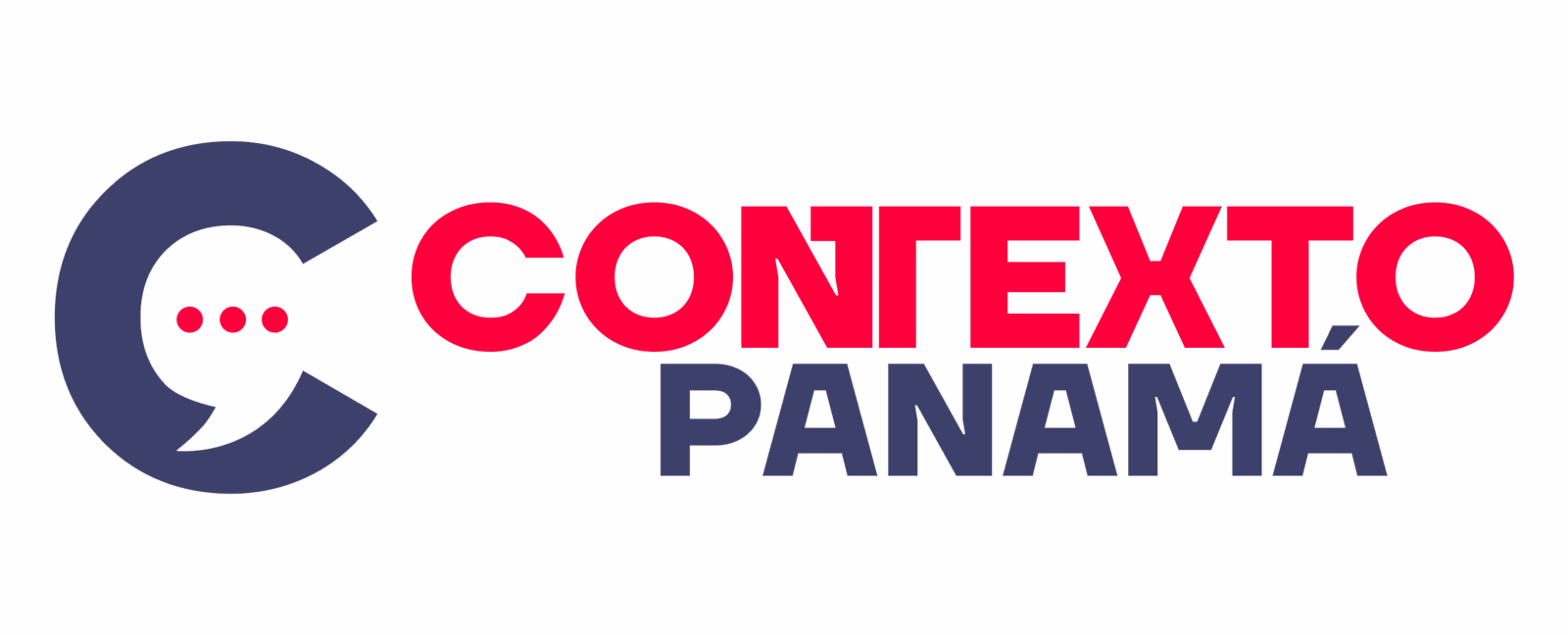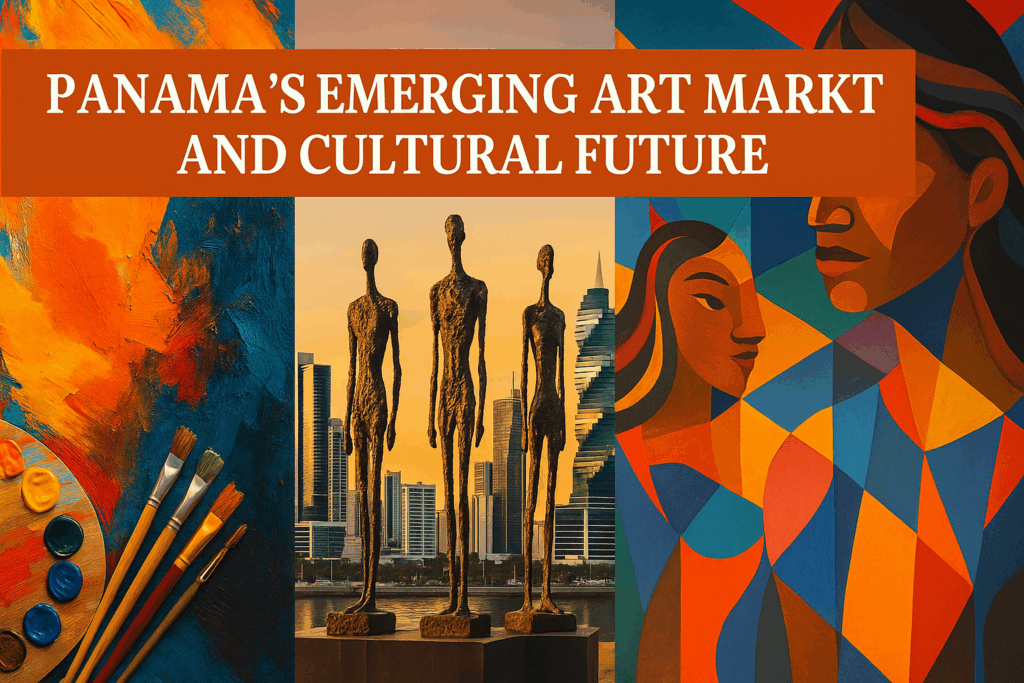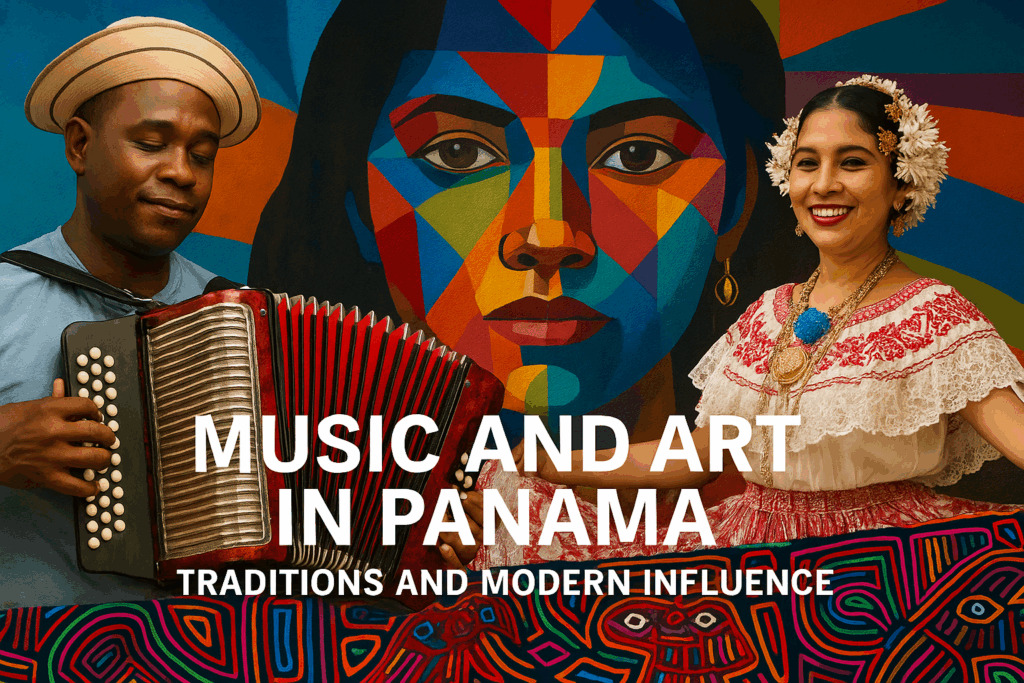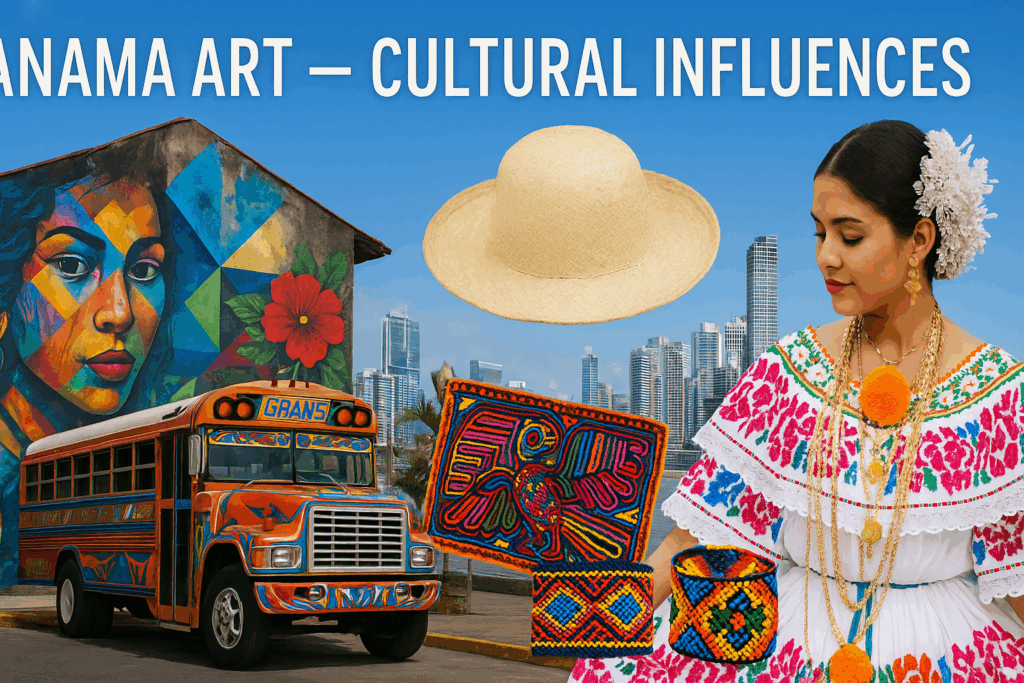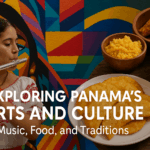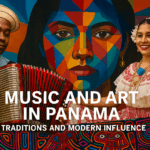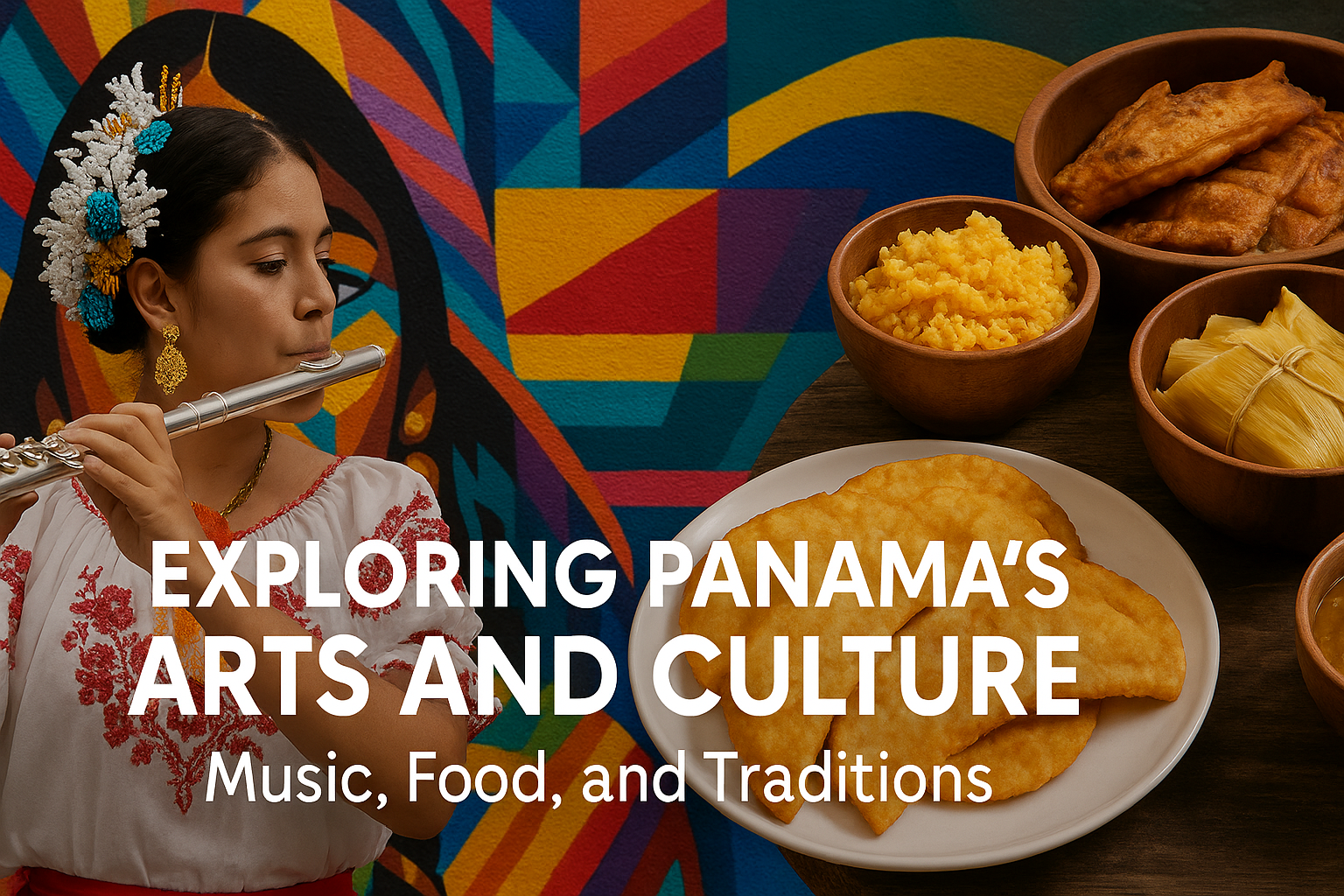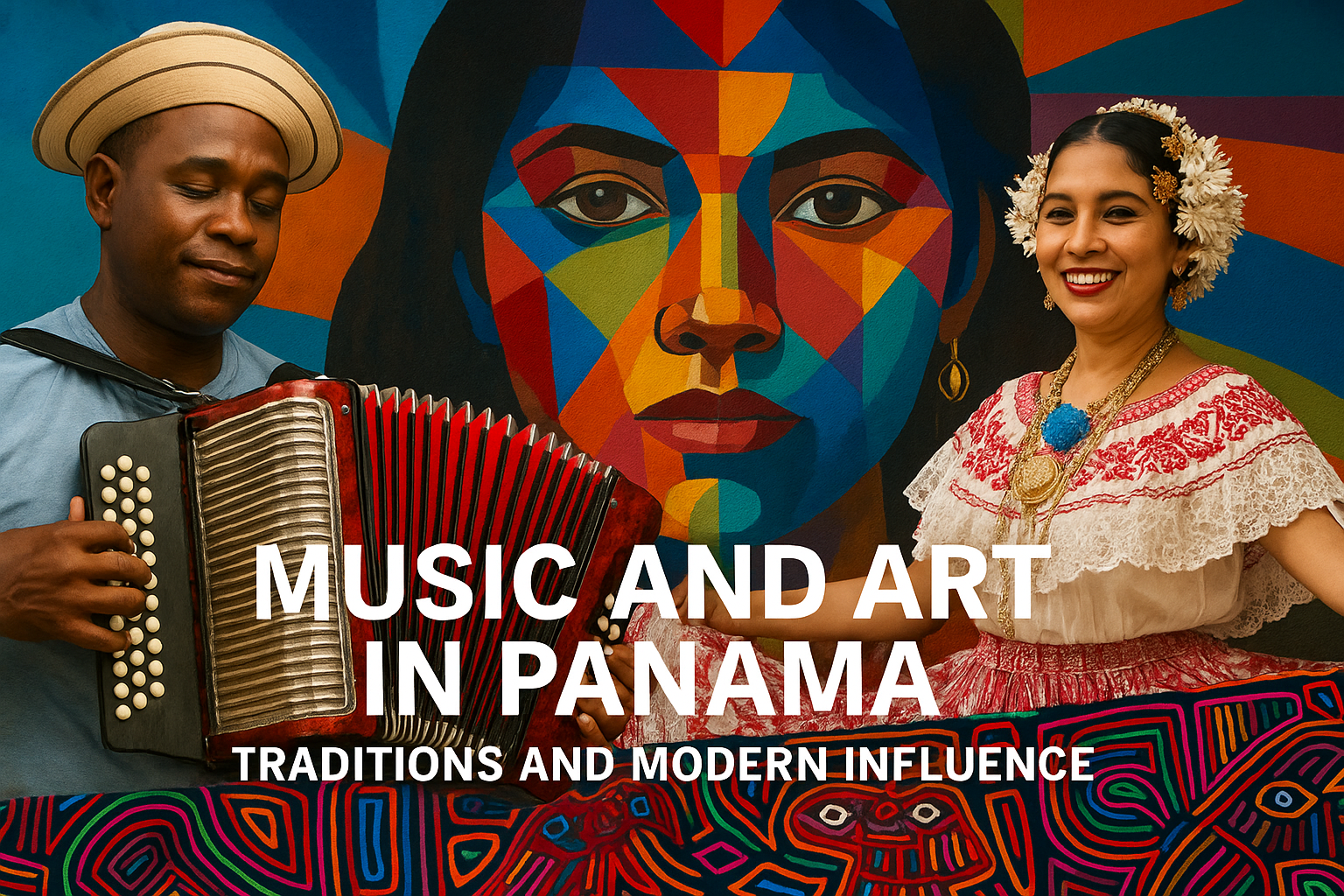Art and Culture of Panama
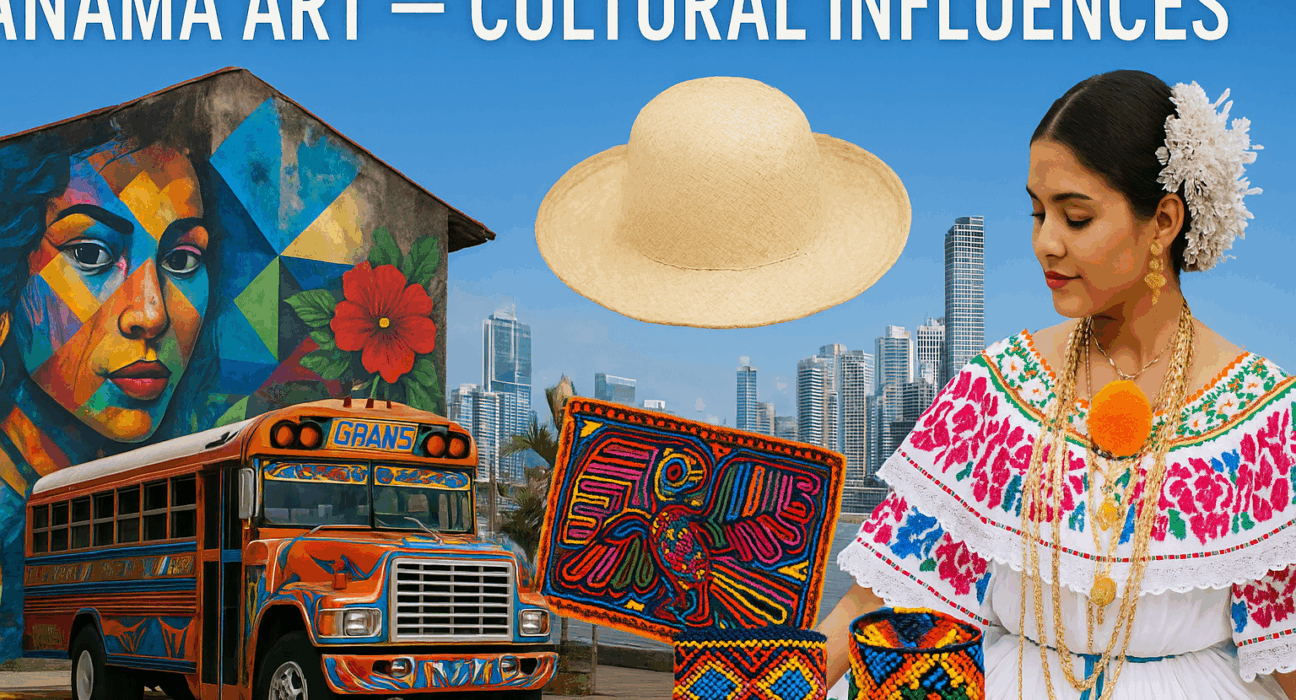
Panama Art — Cultural Influences
From indigenous molas to modern murals, and from colonial architecture to sleek skyscrapers, Panama itself is a living canvas. Each generation in this diverse nation has left its mark, merging styles inspired by different beliefs and traditions. In the rural interior, you’ll find simple, colorful homes and tranquil plazas set against breathtaking natural scenery — an imprint of the past harmonized with nature.
In Panama City, the urban environment also serves as a gallery. Restored buildings, striking sculptures, and vibrant street art all contribute to the city’s aesthetic, transforming what might otherwise be drab concrete corridors. Even former U.S. school buses have been turned into mobile art pieces, painted with favorite icons, family members, and creative motifs (though now replaced by Metrobus service).
Indigenous Art & Traditional Expressions
Artistic traditions indigenous to Panama remain central to its national identity. Vivid colors and motifs drawn from the natural world feature in many crafts. Among the best-known examples:
Molas: These layered, hand-stitched textiles — often depicting animals or geographic patterns — are a Guna art form. “Mola” means “shirt” in the Guna language. Historically, these designs were painted on women’s bodies; later, they were adapted into sewn fabrics, particularly after contact with Spanish colonists.
Panama Hats: Despite their name, Panama hats originate in parts of Panama such as Los Santos and Veraguas. These elegant straw hats can take up to a year to weave and are made from extremely fine fibres. Some hats feature up to 2,000 weaves per square inch. The designs often vary by town, reflecting regional pride.
Beaded Jewelry (Guna): Guna women create distinctive beaded strands which they wrap around their calves and forearms, forming elaborate decorative bands. These beads are said to ward off negative spirits.
Palm Fiber Masks (Embera): The Embera people weave animal-inspired masks from palm fibers and other natural materials. The masks often represent creatures like jaguars, tapirs, and others from the wild.
Pollera (Traditional Dress): Though its roots stem from Spanish colonial influence, the pollera dress has been entirely adopted into Panamanian tradition. Consisting of a two-tiered skirt and a blouse, polleras can be exquisitely made of silk, embellished with jewelry, and priced in the hundreds or thousands of dollars. An annual Pollera Festival in Panama City celebrates this cherished art form and its regional variants.
Contemporary & Urban Art
While traditional art forms are preserved and sometimes reproduced for cultural continuity, Panama also nurtures a growing modern art scene — especially in its capital. You’ll find galleries showcasing modern paintings, wood carvings, interior design pieces, and other creative expressions. Panamanians take fashion and style seriously, and the city vibe can feel as fashionable and dynamic as in any modern metropolis.
In music, too, Panama is thriving: globally known artists in genres like reggaeton and Latin pop bring fresh creative energy to the culture.

